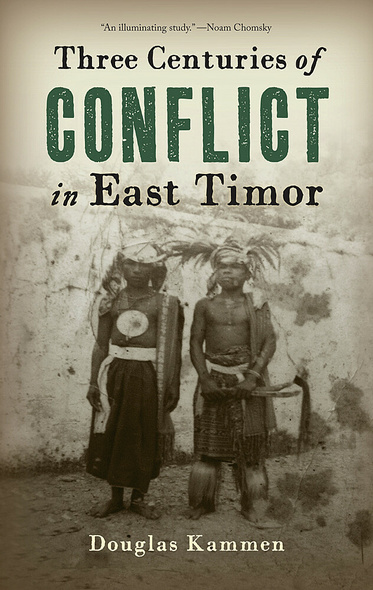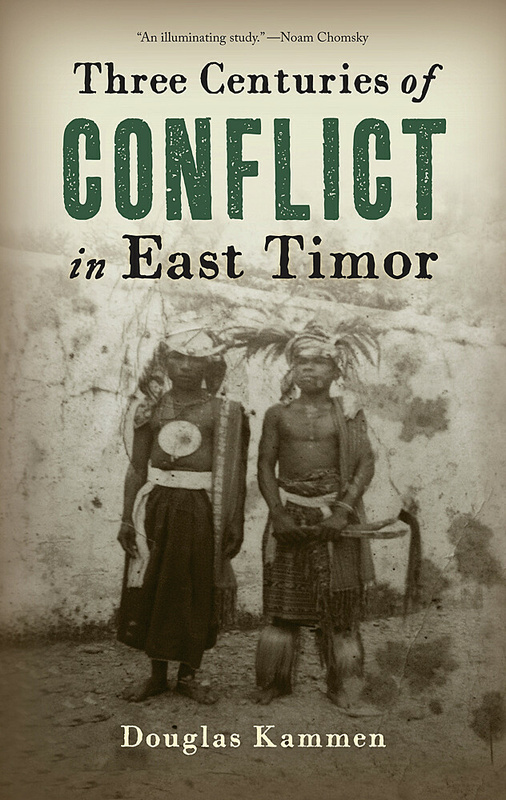
252 pages, 6 x 9
6 photographs, 11 figures, 2 m
Hardcover
Release Date:20 Aug 2015
ISBN:9780813574103
Three Centuries of Conflict in East Timor
Rutgers University Press
One of the most troubling but least studied features of mass political violence is why violence often recurs in the same place over long periods of time. Douglas Kammen explores this pattern in Three Centuries of Conflict in East Timor, studying that region’s tragic past, focusing on the small district of Maubara.
Once a small but powerful kingdom embedded in long-distance networks of trade, over the course of three centuries the people of Maubara experienced benevolent but precarious Dutch suzerainty, Portuguese colonialism punctuated by multiple uprisings and destructive campaigns of pacification, Japanese military rule, and years of brutal Indonesian occupation. In 1999 Maubara was the site of particularly severe violence before and after the UN-sponsored referendum that finally led to the restoration of East Timor’s independence. Beginning with the mystery of paired murders during East Timor’s failed decolonization in 1975 and the final flurry of state-sponsored violence in 1999, Kammen combines an archival trail and rich oral interviews to reconstruct the history of the leading families of Maubara from 1712 until 2012.
Kammen illuminates how recurrent episodes of mass violence shaped alliances and enmities within Maubara as well as with supra-local actors, and how those legacies have influenced efforts to address human rights violations, post-conflict reconstruction, and the relationship between local experience and the identification with the East Timorese nation. The questions posed in Three Centuries of Conflict in East Timor about recurring violence and local narratives apply to many other places besides East Timor—from the Caucasus to central Africa, and from the Balkans to China—where mass violence keeps recurring.
Download open access ebook here.
Download open access ebook here.
Far too late, the savagery of the Indonesian invasion of East Timor finally reached public awareness, leading to Indonesian withdrawal after a final paroxysm of terror. There has by now been serious scholarly study of this terrible period. Douglas Kammen’s microhistorical reconstruction of the last few centuries in one important region, and his firsthand analysis of recent crimes and their aftermath, deepens these inquiries considerably. It reveals intriguing layers of complexity both of the actual historical events and of the ways they are refracted within cultural memory and interpretation, shaping actions and their motives in intricate ways. The conclusions about East Timor, and the general approach, generalize quite broadly to the study of mass violence. An illuminating study.
Kammen has done a valuable service in complicating the literature on East Timor through a fascinating, detailed, and revealing microhistory of an important and interesting locality.
Three Centuries of Conflict in East Timor proves a fascinating examination of political intrigue and violence in the region of Maubara, and is a welcome addition to studies of Timor-Leste.
Across the board, this book provides advanced insights into how to promote grassroots traditions as counter to national narratives of local history. This book is highly recommended for scholars with an interest in ethnic and mass violence in Southeast Asia.
DOUGLAS KAMMEN is an associate professor at the National University of Singapore. He is co-editor of the volume The Contours of Mass Violence in Indonesia, 1965-1968.
Contents
Preface
Note on place names, personal names, and spelling
Glossary and abbreviations
Introduction: Situating Recurrent Mass Violence
1. Contested Origins
2. Maubara and the Dutch East India Company
3. Vassalage and Violence, 1861-1887
4. The Uprising and Devastation of 1893
5. High Colonialism and New Forms of Oppression, 1894-1974
6. The End of Empire and the Indonesian Occupation, 1974-1998
7. Serious Crimes and the Politics of the Past, 1999-2012
Epilogue
Appendices
Notes
Bibliography
Index





